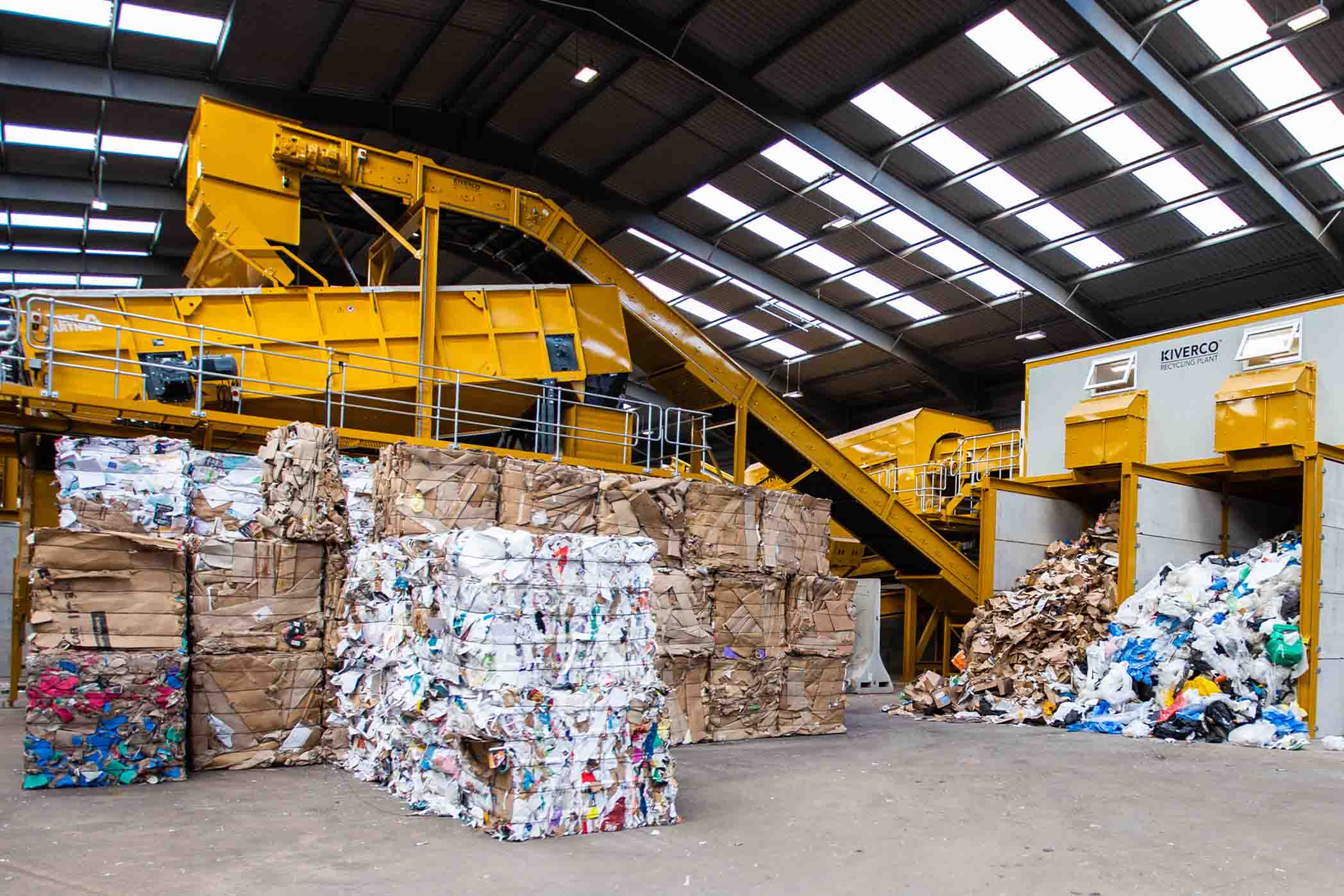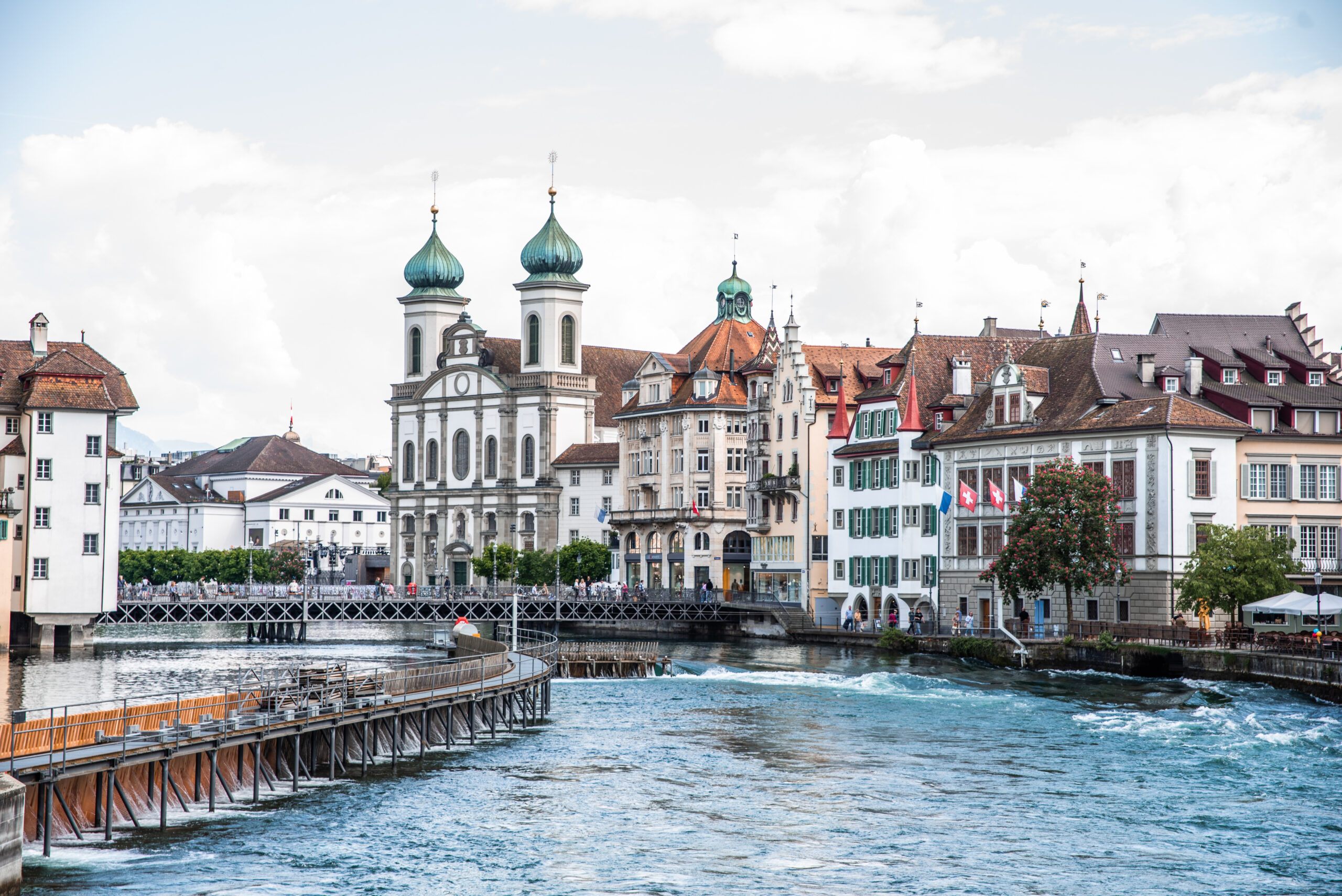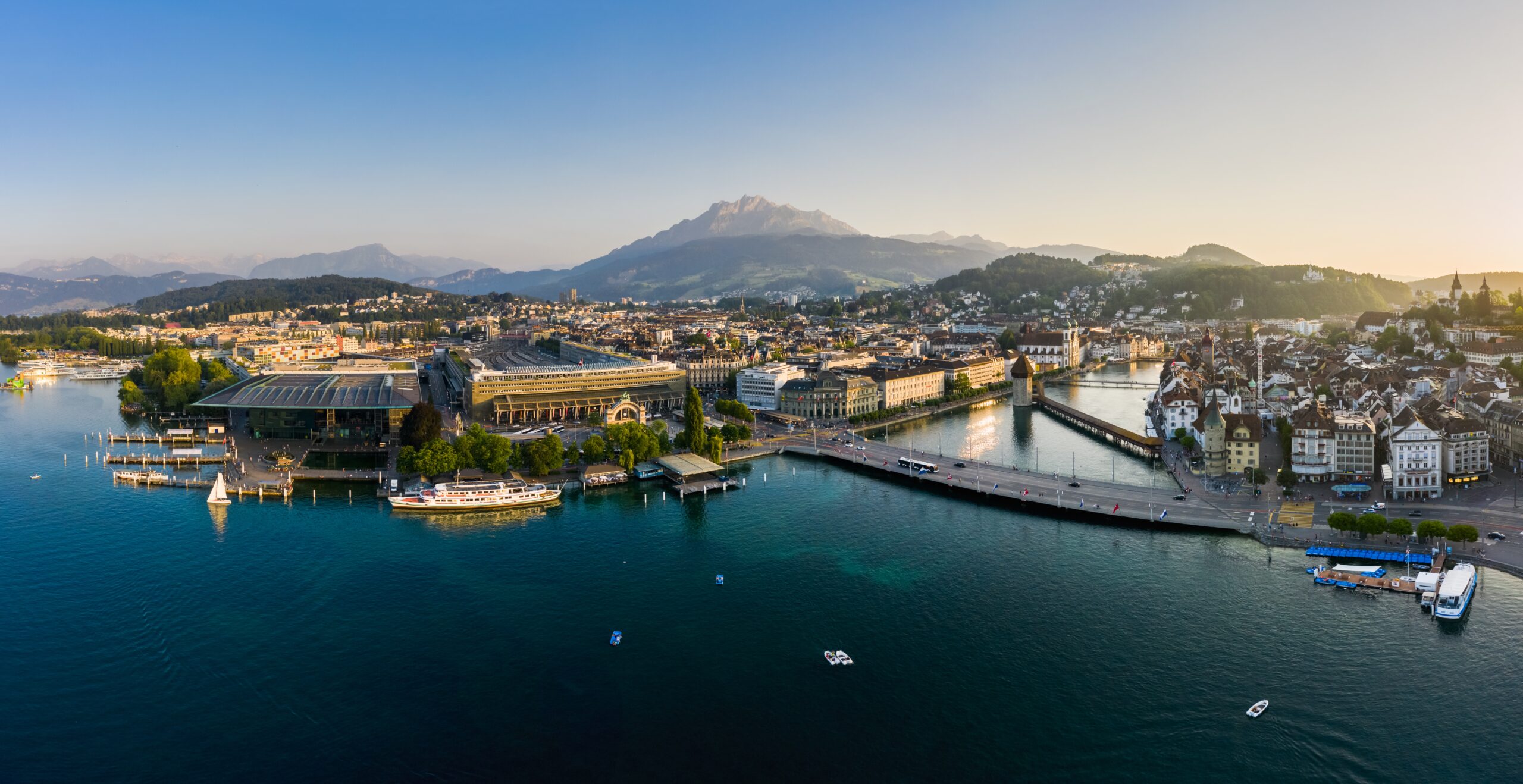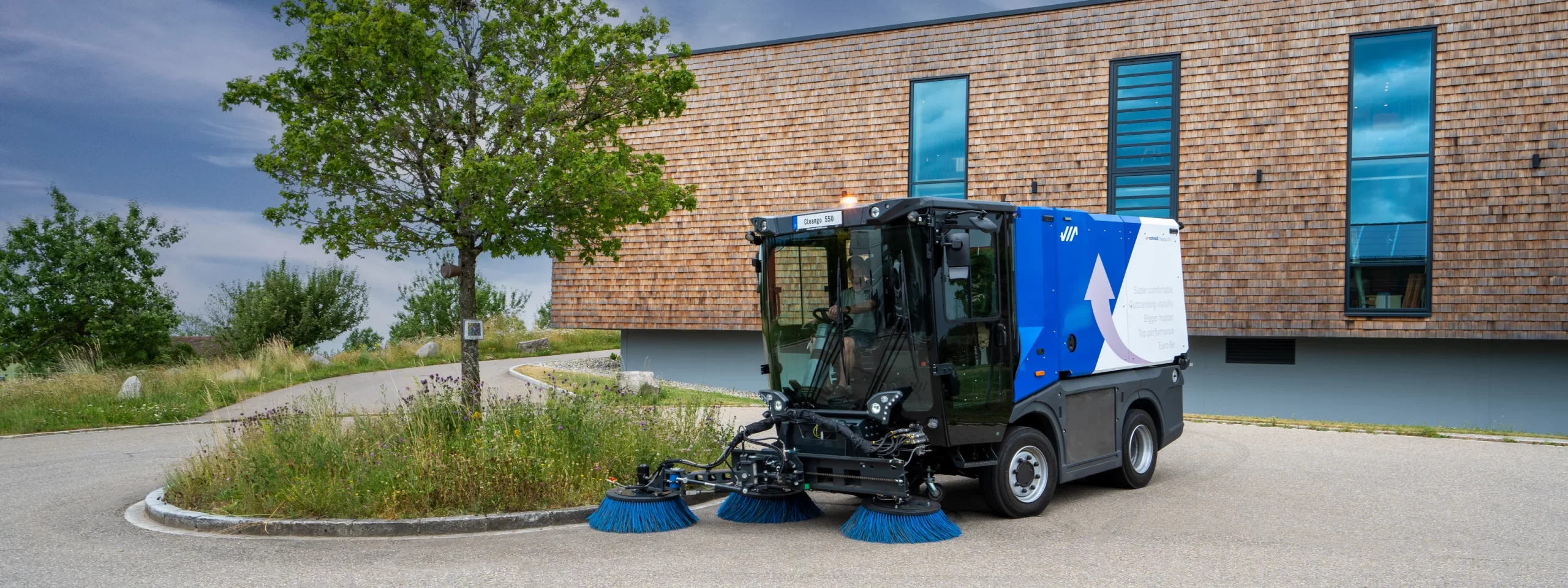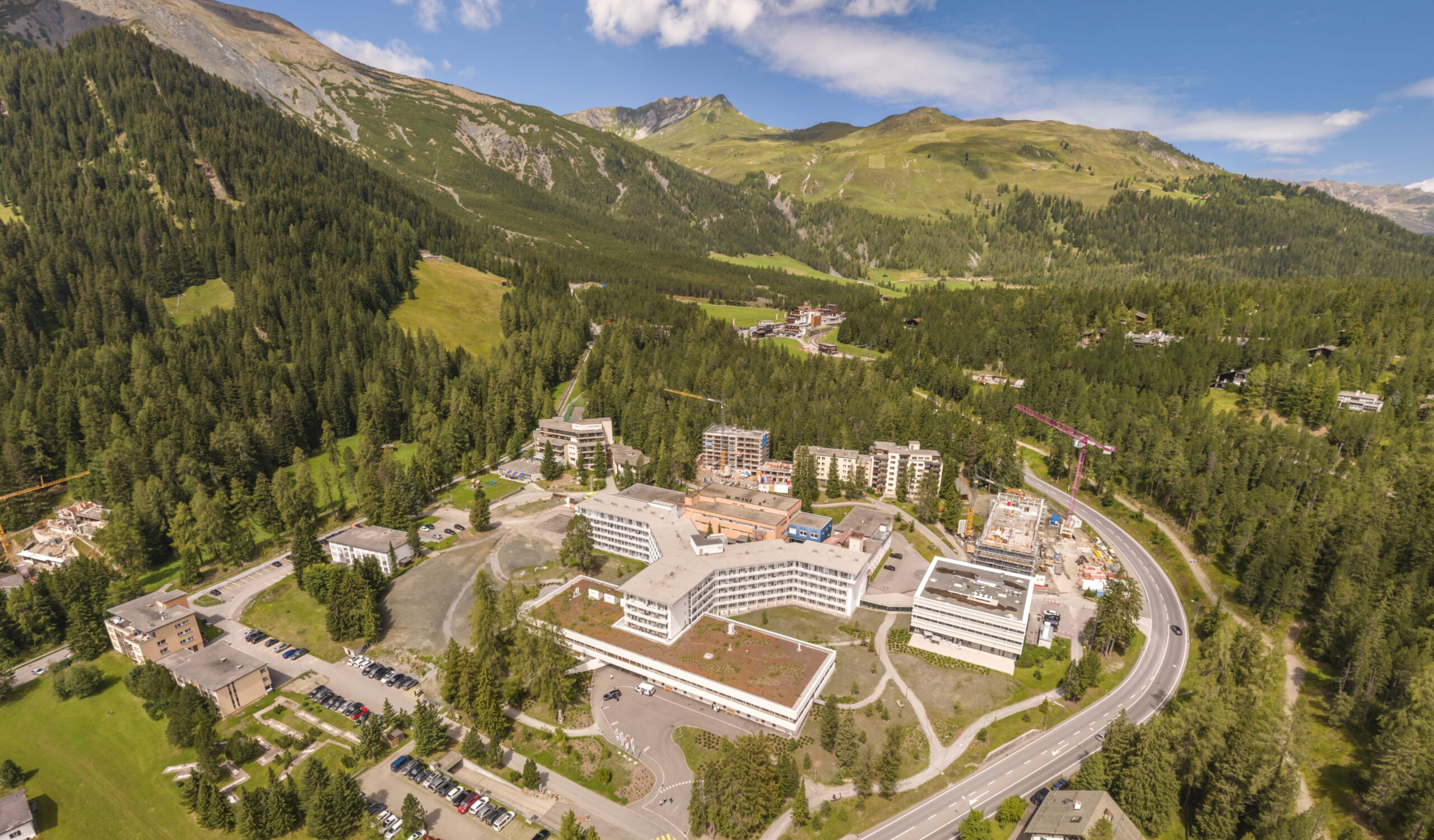One of the best solutions for Egypt’s constant overpopulation of cities has been urban expansion. It is part of an ambitious government plan to build new cities on the outskirts of every major governorate in Egypt.
The Egyptian real estate sector has historically proven resilient to economic and political tensions over the past decade and has been strongly supporting the economy. The sector employs 5% of the countries labor force and has been growing tremendously since 2005. During years such as 2013 when the economy was slow moving the sector thrived making up to 9% of GDP. In 2018, the sector represents 16.2% of the country’s GDP which the Egyptian Centre for Economic Studies states is too high. Real estate companies listed on the Egyptian Stock Exchange witnessed double-digit growth in revenue which has built their market capitalizations. The sector is currently growing at more than 20%. Real estate properties represent a third to half of the wealth for families in the middle and high-income segment. Even more in lower-income classes. The real-estate sectors activities rose by 952% between 2010 and 2017.
The sectors general drivers show strong demand overall starting with Egypt’s population of 100 million which is expected to continue its current trajectory of 2.2% growth. The Egyptian population is quite young with 50% being under 25. There are nearly one million marriages per annum in Egypt, and culturally newlyweds are expected to own property. In addition, improved healthcare, reduced mortality and an already high fertility rate underscore the nations steady future demand for additional real estate development.
The annual demand for new domestic housing units reaches 500 000 units per year. Cairo is home to over 20 million people, and is one of the most congested cities globally. The city’s population is projected to double by 2050. The nation has been playing catch up in the construction of new units with niche segments showing vastly different dynamics. Overall, despite favorable demand set to continue for decades, the sectors main challenge remains offering affordable housing to the population. The focus has long been on the nations premium real estate, a segment which in 2018 has grown to be over saturated.
Private sector investments are particularly specialized in the high-end consumer market due to its lucrative profit margins. Real estate developers have appealed to consumer aspirations for a high-end living, and the result has been heavy investments in self-contained, mixed-use communities in Cairo’s east and west suburbs. However, this niche segment represents no more than 15% of the population. A core driver of Egypt’s property investments is a hedge against inflation. The undersupplied residential market, devaluation, and currency fluctuations have increased residential prices by 20%.
Developers have created flexible payment terms and extended payment schedules, resulting in 10-year payment schemes for residential properties. Such moves are helping the sector thrive. Nonetheless, the sectors resilience is being challenged by a slow down in economic activity. The conditions that led to the booming of the market are stabilizing. We are unlikely to see double-digit increases in property prices, selling out in the first hours of new launches and aggressive increases in sales. We are more likely to see stable prices, extended payment terms, product mix innovations, smaller units and cautious land acquisition deals by developers. We expect the government to offer new land plots at auction at a faster rate.
The market: It is not a single homogeneous sector across Egypt. The sector is driven by large developers buildings first homes in Greater Cairo and second homes by the beach. An additional segmentation applies to class divided into luxury, upper middle, middle class, lower middle, and social housing. Luxury and upper-middle segments are over saturated and indisputably show symptoms of a bubble. The remaining middle class, lower middle, and social housing segments receive little attention though being quite healthy and profitable particularly in middle-class areas.
Second Homes: In addition to primary accommodation, vacation homes have become a popular investment and lifestyle choice within Ain Sokhna, North Coast, El Gouna, Sahl Hasheesh and Sharm El Sheikh areas.
Sustaining high occupancy year-round is a challenge for investors, but there is an opportunity for developers to create essential community infrastructure that increasingly attracts not only vacationers, but also long term residents and eventually even retirees.
There is a global pattern of retirement communities developing in vacation locations, and Egypt has the potential to capitalize on its aging population while catering to an affluent global retiree.
The introduction of additional healthcare facilities including; rehabilitation, long-term care, retirement homes, wellness retreats, and other fitness facilities would be a new pull factor for the segment.
Millennials are driving demand: Egypt’s private sector real estate companies release 60 000 residential units every year which remains insufficient to meet national demand driven by Egypt’s population yearly increase of 2.5 million. This growth guarantees people will be buying and selling homes for several generations to come and the first wave of this generation, those in the 25-35 age group, are now in their prime home-buying years. Purchasing power in the market has decreased with the depreciation of the pound. While many want to buy housing units, the market is in short supply of units that meet their needs. On average the sector has older housing units that are 2.4 times larger than regional North African markets while demand is increasing for small units. Present economic conditions and difficulties in acquiring credits have led to the secondary markets slow down, and selling has been limited to newly constructed units. To appeal to the middle class and amid slow primary sales, developers are offering extended payment terms exceeding ten years in some cases with zero down payment, while buyers interested to sell their already purchased units are facing a slowdown in the secondary market.
Urban Expansion: The population of Ancient Egypt under its first dynasties was 1.5 million inhabitants and utilized 3% of land in the country. In 2018, Egypt’s population has reached 100 million yet only 6% of the land is utilized. Therefore, Egypt’s urbanization and the increase in utilized land has become a priority to increase this figure beyond 10%. The New Urban Communities Authority aims to increase this percentage to 14 by the year 2050. The urbanization strategy is meant to decentralize national development and increasingly benefit society.
In February 2016, with the launching of the Sustainable Development Strategy – Egypt’s Vision 2030, the Egyptian government set out national goals to develop the nation over the next 15 years. A top priority being a comprehensive urban development plan that enlarges and creates new megacities throughout Egypt to support a rapidly growing population. The government and its related entities are increasingly undertaking large-scale co-developments with private developers. The result will be an acceleration and an increase in the supply of units on the market moving forward.
Megacities: One of the best solutions for Egypt’s constant overpopulation of cities has been urban expansion. It is part of an ambitious government plan to build new cities on the outskirts of every major governorate in Egypt. New city developments in Egypt are expected to ease pressure on heavily congested Cairo, Alexandria and other regional capitals. The occupation rates in these remain less than what was targeted.
For decades Egypt has planned and worked on building the necessary infrastructure for private and public entities to market real estate and commercial complexes that will bring life to these new cities. They are located all over Egypt with the biggest pushing to solve the overpopulation in Cairo and Alexandria.
Egypt has begun constructing 20 fourth-generation cities on a total area of 2.44 million kilometers squared with a capacity to house nearly 30 million individuals.
New cities are subdivided into four distinct categories which consist of first, second, third and fourth “generation cities.”
First generation cities include: 10th of Ramadan, 6th of October, Al-Sadat, 15 May, New Borg Al-Arab, New Salhea, and New Damietta.
Second generation cities include: New Beni Sweif, New Minya, New Nobariya, and Sheikh Zayed.
Third generation cities include: Al-Shorouq, New Cairo, New Assiut, New Thebes, New Sohag, New Aswan, New Qena, New Fayoum, New Akmeem, North Suez Gulf resorts, New Luxor, New Toshki, East Owiynat, East Port Said and New Farafra.
Fourth generation cities include the New Administrative Capital and New Alamein alongside several extensions of previously mentioned and built cities: South New Cairo, New 6th of October City, October Gardens, extension of Sheikh Zayed, New Sphinx, El-Obour City, New Alamein City, New Mansoura City, extension of New Nubaria, East Port Said, New Bir al-Abd, New Al-Fashn, New Mallawi, and Toshka. NUCA plans to deliver and accommodate people within most of the 20 new cities by 2021. The four key cities that have already broken ground include the New Administrative Capital, New Alamein City on the Mediterranean, El Galala City along the Red Sea coast near Ain Sokhna, New Ismailia City on the Suez Canal and New Mansoura City in the Nile Delta.
The military is involved in the development of two cities in particular: New Alamein on the Mediterranean coast and Gabal Galala in the mountains above the northern Red Sea.
The construction works at megacities are being done quickly in the hopes of providing the new inbound population all the amenities of the old cities upon arrival. In brief, Egypt has prioritized urban expansion to face the challenges caused by population growth. The new megacities are meant to put an end to the slum phenomenon and provide appropriate housing units for all social classes. For these cities to become an attractive destination and home for millions of Egyptians, the government is trying to create integral communities that provide social services, economic opportunities and plenty of entertainment.
The government has stood steady in its commitment to alleviate the huge pent-up demand in the housing market, and the government’s spending on housing has increasingly risen over the past few years. President Sisi clearly stated Egypt’s current urbanization agenda is an investment in the future and such investments had been previously delayed and were long overdue. Critics say new cities are “vanity projects” using much-needed funding that could be better spent at a time cost of living is rapidly increasing. As the cost of living increases, Egyptians find it reasonable to expect an improvement in their daily lives. It is clear Egypt has strategically prioritized the nations long term strategy, and we will soon see if the megacities are executed correctly and indeed are inclusive for all Egyptians.
New Administrative Capital (NAC):
The three-phase administrative capital master plan covers 700 square kilometers of desert and is located on the outer edges of the Cairo governorate, 45 kilometers east of Downtown Cairo. The location allows proximity to Cairo and the Suez Canal Economic Zone which has been increasingly developed to boost state revenue.
The NAC is promoted as a massive improvement to security and connectivity for its residents. It is considered a smart city utilizing technological innovations across many sectors, such as hazard detection or traffic control. The landscaping concept will include lush green central areas much larger than New York’s Central Park. Other amenities including an expo center, theme park, 40 000 hotel rooms, 21 residential districts, a diplomatic quarter for 100 embassies, 1 250 religious buildings, and an opera house. The first phase is due to be completed by mid-2019. The project is supported by a strong political will and is quickly developing with relocations just four years after the project was announced. The NAC, once completed, will deliver housing units to house an estimated 6.5 million people who are currently living in overcrowded areas of Cairo.
Excluding the Chinese led business district, most of the projects in the new capital have so far been undertaken by the military, the housing ministry, and some Egyptian contractors that purchased small areas of land.
Although plans foresee two new metro lines connecting Cairo and Giza to the NAC by 2030, the initial phases will require the population to utilize an extended road network via cars and buses. Therefore, the government is prioritizing building the NAC’s transport network to increase connectivity with current greater Cairo. Wide roads will connect Cairo to the New Administrative Capital through the North via the Cairo Suez Highway and the South via the Cairo-Al Ain Sokhna Highway.
Even with remarkable progress, companies, embassies, and other stakeholders are mostly taking a wait and see approach since many areas will not be completed until 2022. Many businesses that rely on proximity to clients and suppliers want to see what happens in their B2B network. Egypt will move all its administrative offices to motivate companies to the new city.
The NAC will be the headquarters of all banks in Egypt, as well as ministries, parliament and other administrative offices. The headquarters of the Egyptian presidency will also be moved to the new capital by June 2019. Government institutions and offices were previously centered in downtown Cairo which caused many challenges for the development of the area. These institutions were housed in buildings not fit for their needs and attracted foot traffic which exceeded the areas capabilities. The new ‘government district’ in the NAC has been purpose-built to meet the office space demands of these entities, and state institutions plan to relocate in mid-2019.
Risks associated with potential delays could easily happen and has historically been the case with other government projects. For example, a EUR 19 450 million investment by China Fortune Land Development Company (CFLD) was canceled in December 2018 after prolonged negotiations that started in 2016 even though the first phase was meant to be completed mid-2019. The Egyptian government has placed a hard line during negotiations to ensure it receives its desired distribution of sales revenue from each project. This cancellation in part shows, that although the government is set on finishing NAC at record speed, it will not do so at the cost of future revenues for the Egyptian State.
A report by the Egyptian Center for Economic Studies (ECES) in 2018 highlighted that 25% of the units built by the state in the new cities had not been sold. It pointed to the “government’s venture into the real estate market” and increasing “inclination to build and sell fully-finished units to higher-income groups” while underlining its track record was not encouraging. The report further highlighted that the real-estate sector’s role within in the economy had reached 16.2% which was excessively high.
NAC Commercial Real Estate: While residential promotions have consistently enjoyed high visibility, commercial real estate has received less attention due to retail being hard hit by the devaluation of the pound. Retail is rebounding following the devaluation and interest in commercial opportunities could soon overtake office space.
Attracting businesses will be a crucial factor to the NAC’s success. Developers increasingly offer off plan commercial real estate in a variety of specialized locations including a EUR 950 000 million medical city and 4.2 million square meters of retail space including a central retail district.
New Alamein City: Egypt’s Western Mediterranean coast will be home to an estimated 34 million people by 2052. The first new megacity on the coast is expected to be completed and holding a population of over one million is New Alamein City. It is 34km west of Alexandria, its construction is well underway, and investments for the first phase are estimated at EUR 4 200 million which is half of the entire allocated budget for the development of Western Egypt. The city is funded by the New Urban Communities Authority (NUCA) and major investors.
Remnant Mines from WWII in Al-Alamein: The New Alamein megacity and the development of the northern coast are seeing an increase in discussions to speed up the land mine clearing process. Egypt suffers from the continues damages caused by 22.7 million landmines planted during World War II. This represents 20% of the total mines planted globally, and nearly 17.2 million mines were in Al-Alamein. Egypt may be considered the country with the most explosive remnants of war in the world. Mine risk awareness has greatly contributed to diminishing the number of victims. Their presence hindered the development of the area for years, and the army has committed to making it safe to boost the regions economic development. 394 square kilometers were made mine free in 2015, and 1 454 kilometers have been cleared of landmines at Al-Alamein with the collaboration of the United Nations. Showing progress, 2016 was the first year the Governorate of Matrouh recorded no mine-explosion accidents. Efforts are currently on the ground to ensure Egypt is mine free.
New Alamein City Amenities: Special dedication has been taken to utilize the latest scientific methods in its urban planning and to ensure its construction uses enough technological advances for it to be considered the first eco-friendly city in Egypt. New Alamein City is considered one of the most important projects on Egypt’s Northwest Coast. Its establishment is meant to serve as a gate linking North Africa with South Europe developing economic ties and fostering tourism.
The total area of the city is 201.4 square kilometers. The first phase consists of a total area of 33 square kilometers and could accommodate up to three million people once complete. To ensure affordability is addressed and nearly 5 000 social housing units are planned for the first phase with 1 920 currently being finished in late 2018 at the cost of EUR 14.7 million. In 2018 the population of the city is 11 000 and should quickly rise to 400 000 with the completion of the first phase of the city. The remaining phases are set for completion in the next seven years.
The city is divided into two main sectors. The first is the “Shore Sector” which is between the shore and the international road (Matrouh-Alexandria). The second is the “Southern Sector” which lies South of the international road. Within these sectors, President Sisi ordered the establishment of touristic, industrial, agricultural and educational projects to attract domestic and foreign tourists to New Alamein City.
The city’s infrastructure is currently under construction and includes 110 kilometers of roads. These paving works are currently finished with the widest being five lanes in each direction. Construction is ongoing for the cities 100-kilometer water supply network, 83-kilometer sewage network, 153-kilometer irrigation network, 123-kilometer rainwater drainage network and 580-kilometer electric network. Solar water desalination plants will meet local demand while rainwater and underground water supplies will be utilized to irrigate reclaimed land. Dabaa nuclear plant is planned and scheduled to be built nearby in the coming years to meet the expected increased demand. It is the first nuclear power plant planned for Egypt.
The Mohammed Naguib military base was inaugurated nearby in 2017 and is the largest base in the Middle East and Africa. Its presence will protect the security of the region, and ensure safety for residents and investments.
New Alamein City Tourism: The city is being prepared to be the summer headquarter for government agencies with presidential and cabinet offices. Government sources claim it will compete with the most famous tourist resorts in the Mediterranean. The city will count with a 14-kilometer tourist walkway which in mid-2018 had 7.5 kilometers already completed. The entire walkway should be open to visitors by the summer of 2019. The city is expected to host a city center, several residential areas, a conference center, entertainment areas, cultural center, open museum, hotels, universities, several large parks, integrated logistic operations, and all necessary administrative and governmental services.
East Port Said City: 78 square kilometers were allocated to the East Port Said City. It is a natural extension of Port Said and will be able to accommodate a million people. The East Port Said Industrial Zone covers an area of 16 kilometers squared and is developed and promoted by the East Port Said Development Company. Investments reached $1.8 billion. Zero tax and zero duties on tools, machines and raw materials for the production of goods that will be exported have been introduced to lure companies. This industrial park is expected to turn Egypt into a regional hub for maritime trade, given its strategic location on the Suez canal.
The New Ismailia City
New Ismailia City covers an area of 8.5 square kilometers and is a natural extension of Ismailia. The city will depend primarily on alternative energy sources and clean energy and is showcased as Egypt’s first electronic city. The city’s plan expects 5,754 residential units and 620 semi-detached townhouses will be built in addition to residential buildings and service shops and centers.
New Mansoura City: Old Mansoura has a population of 961 000. The New Mansoura city is planned 54 km on the outskirts of the old Mansoura city, which is the capital of Dakahlia governorate. The new city is located on an area of 29 square kilometers right next to the touristic resorts city of Gamasa which should aid in developing the area. The project will be rolled over four phases. The first phase is being built on an area of 8,4 square kilometers at the cost of EUR 2 199 million and will include 1 200 villas, 11 000 housing units in the Janna project and 4 500 units in the Sakan Misr project. The Egyptian navy is executing a 2-kilometer marina with a capacity for 1 000 yachts which should be opened in 2020. A road already exists connecting New Mansoura and old Mansoura, however, road development is taking place to further accommodate the expected increased transit on the route.
New Assiut: The designated plan for the cities urbanization is built over 126 square kilometers at a distance of 15 Km from Assiut city which in 2018 had a population of 433 395. The governorate’s population unlike Cairo and Alexandria mostly live in rural areas. The urbanization rate in the region is quite low reaching only 26.5%.
Investments in New Assiut city by 2018 reached EUR 195 million, and it is set to receive an additional EUR 12 million in fiscal year (FY) 2018/2019. Plans suggest the new cities population can be increased from 30 000 to 750 000 within a few years.
The cities infrastructure has made significant progress. Underground pipework and the electric grid are complete. Road paving has lagged behind scheduling and in mid-2018 had only reached 50% completion.
Real estate developments within the city cover an area of 27 square kilometers which will hold nearly 71 000 residential units out of which 11 300 are complete. In addition, several commercial centers have been planned with 15 having been completed and an additional 22 being under construction.
El Galala: Covering 79 square kilometers on the Red Sea area between Ain Sokhna and Zafarana, the Armed Forces Engineering Authority is establishing an integrated city on top of a mountain.
The city aims to attract domestic tourism with a 4 square kilometer tourism resort. Water and energy resources are to be provided through a desalination plant and Zafrana wind farm.
Foreign buyers: The EGP flotation contributed to an increase in residential real estate investments. Foreign interest in Egyptian real estate is peaking with a clear increase in demand from Egyptian expats living in the GCC. Especially Saudi Arabia, Kuwait, the UAE, Qatar, and Oman. Reforms in the GCC decreased Egyptian expat earnings which curiously resulted in many men staying while their families moved back to Cairo. This is increasing remittances to their families in Egypt. The EGP’s float encouraged property in Egypt highlighting it as a promising investment.
Investment in real estate is dominated by the private sector and receives the largest share of private investment. On the EGX it accounts for nearly 12% of market capitalization and ranks first in terms of volume traded. Economic conditions throughout 2016 and 2017 accelerated buying decisions, driving real estate growth. Many have learned that prices appreciate rapidly, and it’s always better to buy now. Property developers are realizing the benefits of being listed and up to 14 real estate companies are preparing to offer shares on the EGX. Real estate stock prices have proven resilient to market contractions and show strong growth prospects going forward.
Real estate investment funds: The introduction of real estate investment funds REIFs to Egypt should spur investment and help finance developers. The REIF’s legal framework was established in 2014, but they only began to emerge in late 2016. REIFs provide exposure to the real estate asset class without holding the physical unit. Their use will enable developers to diversify away from their reliance on off-plan sales and equity for financing. Should international investors find REIFs lucrative, the segment can become an important source of foreign currency for the economy. The segment experienced a set back when Naeem Holding, one of the first REIF in the market launched a EUR 48 million fund which even though was oversubscribed was shut down due to lack of demand. Nonetheless, several others are gaining ground and growing despite the market’s lack of awareness and restrictive legislation. The government should consider making them tax exempt.
Office Space:
Current interest is geared more toward office space than commercial space, as retail was hit by the devaluation of the pound. Vacancy rates are high and increased to 26% while rental rates are decreasing in many business areas of Cairo. This has been caused by a spike in supply rather than a fall in demand with many new projects coming into the market. Curiously demand for smaller, well-equipped offices is on the rise, and the market should adapt to meet the needs of SME’s and startups to decrease vacancy rates. With many owners having extensive expenses in USD they are holding out on decreasing price offering especially following the depreciation of the EGP. Devaluation has had an impact on affordability, and the market consistently resists relinquishing its margins.
Affordable housing: Lower income segments experience a housing deficit of nearly 3.2 million units. With nearly 45% of the population of the nation living in metropolitan areas, the annual demand is generally estimated to grow specifically in already oversaturated areas. Egypt has many plans for urban spaces that are meant to address the severe housing shortage, overcrowded residential areas and if executed correctly will bring a better lifestyle to many Egyptians. Low-cost housing is offered for purchase at special interest rates of 5 to 7%. This is quite lower than 20% market rates. Although efforts are underway to close the housing gap, more information is needed on how Egypt’s new urban areas plan to incorporate the lower classes within massive megacity developments.
The Egyptian government is moving ahead with a five-year plan to provide a million subsidized housing units. The New Administrative Capital will, in addition, have 240,000 social housing units by 2024.
Underdeveloped mortgage market:
Egypt’s home loan market was activated in 2001 but remains far below saturation. The total value of mortgages comprise a negligible 0.36% of GDP and is well behind global averages that reach 60-80% of GDP.
Slow growth can be attributed to legislative barriers and costly financing mechanisms. Easier and more affordable financing is provided by real estate developers at minimal interest rates. An underdeveloped financial market contributes to the supply and demand imbalance. Off-plan sales dominate the sector but benefit high-income buyers who can pay the full amount in cash over seven to ten years after a 10% downpayment. This much-needed liquidity is very beneficial for developers. However, the model is prohibitive for middle and lower income brackets. A low end 130 square meter apartment can cost about EGP 750 000 (EUR 41 800). This would require a downpayment of EGP 75 000 (EUR 4 180), and monthly installments of EGP 7 700 (EUR 429) which would require a monthly household income of at least EGP 25 000 (EUR 1 395).
Developing the mortgage market thereby extending payments up to 30 years would greatly benefit affordability. A key challenge is that current laws require legally registered properties to issue mortgages, and only grant loans after 30% of the unit is constructed. Consumers that can afford cash payments can only access a mortgage after almost 70% of the unit is finished making the concept almost unnecessary. On the other hand, much of Egypt’s property is unregistered due to being informal settlements, difficult procedures, or disputes thereby increasing the inaccessibility to consumers who would benefit from a mortgage plan. Therefore, the mortgage for years continued to be underdeveloped.
Egypt’s Central Bank has gone through great lengths to improve access to financing including efforts to increase the number of authorized lenders to include mortgage finance companies starting February 2016.
This positive development allowed Egyptians earning EUR 67 per month to qualify for mortgages with low-interest rates of 5% and middle-income earners, EUR 727 per month, for mortgages with 10.5% annual interest.
To safeguard banks from the risks of lending to the informal sector they are now able to use group insurance policies.
Mortgage values registered positive growth in the wake of these changes, growing 30% year on year in the first quarter of 2016, according to a report by the Egyptian Financial Supervisory Authority. Expanding mortgage financing improves the prospects for growing the real estate industry, raising the population’s living standards and developing the financial market. The segment is experiencing double-digit growth but still represents a tiny portion compared to upfront off plan payments.
Risks: Although analysts predicted a real estate bubble and warn of a potential bursting, Egypt’s real-estate market slow-down does not resemble a bubble and is better attributed to saturation in previously high margin upper scale niche segments which have tended to captivate the attention of the media. A real estate bubble occurs when supply outstrips demand, which is not the case in the overall Egyptian market.
In addition, the sector is in part safeguarded by the extremely low penetration of mortgage financing which barely reaches 3% of purchase operations. The majority of purchases in the Egyptian real-estate market are in cash, not credit.
If a bubble bursts, small developers will suffer severely due to their undercapitalization while large-scale developers will require tapping into their cash flows. Additional financing will be needed for current developers to avoid a crash and extensive delays to project finishing dates.
A bubble burst in the luxury segment will undoubtedly have severe consequences for the other healthier segments. Previous real estate bubbles in Egypt have translated into a several year slowdown in primary sales and a freeze in secondary sales without a decline in the nominal price of units. This has historically built a resilience with owners preferring to maintain units instead of selling at a loss which historically gave the market room to absorb the shock.
A strong track record has built a buy now mentality which has bolstered the sector. However, following the devaluation, banks offered 20% interest on deposits which although is now slowly decreasing to an average of 15% affects the attractiveness of investing in the real estate sector. Attractive financial products are an alternative to real estate, and prospective buyers could begin to delay their purchase decisions and keep savings in bank accounts instead. Nearly 40% of purchases in the sector are considered an investment or purchase for children. However, with inflation rates higher than property price increases, the real return has been negative.
Some members of the real-estate sector are raising concerns about the seriousness and viability of certain companies and their projects. Certain real-estate companies are offering payments plans which are not matching market regulations, and are unlikely to properly finance the project to completion. In the meantime, parliament has increasingly been receiving complaints from constituents who bought homes from developers who are not committing to their delivery dates. A law to curb infractions in the real-estate market, such as not meeting delivery dates, is needed, observers said. Under these circumstances, potential buyers are encouraged to assess the real estate companies reputation and consider trusted developers.
Outlook: A significant increase in lands supplied by the government aimed at collecting funds to shore up the national budget deficit is translating into developers offering numerous projects simultaneously to collect cash to pay land installments. The government should increasingly scrutinize these projects pre-launch to ensure developers have enough capital and that it is used efficiently to finalize projects. The real-estate market needs better organization. It is easy for the private sector to enter the market, but it is difficult to get out.
The promise of appreciating property values has supported demand for real estate thus far, but spiraling inflation seriously erodes consumer affordability for houses. A key indicator will be seeing if the private sector can replicate its successes within the premium high margin upscale real estate housing segment into middle-income projects able to bring affordability to the market. One of the highest barriers remains the initial price land reaches during government auctions. The real estate sector in Egypt will be an essential economic sector continuously driving growth for many years to come, but it will not be an easy ride for developers that are unprepared.
DMG: Another strategic national housing project is the development of the 2.02 square kilometer EUR 3 300 million Mountain View iCity project in New Cairo and the 1.9 square kilometers EUR 2 340 million Mountain View iCity 6 October project in Sheikh Zayed. These private sector-led integrated community projects consist of nearly 18 000 residential apartments, townhouses, and standalone villas is expected to provide 200 000 jobs and is estimated for completion by 2020.
Egypt’s Dar AlMimar Group (DMG) formed a joint venture with Saudi Sisban Holding, and the project is 72% owned by Mountain View – Sisban while the remaining 28% is owned by Egypt’s Ministry of Housing, Utilities & Urban Development through its subsidiary New Urban Communities Authority (NUCA).
New concept: The Mountain View iCity New Cairo development was one of the first mega real estate projects in Egypt to be based on a public-private partnership and Mountain View iCity 6 October constitutes the second partnership following the same PPP model following iCity New Cairo’s success.
The iCity concept brought a comprehensive urban community model that meets world-class environmental standards while maintaining competitive prices. The landscape plan includes innovative solutions to separate human traffic from automotive traffic, including no car zones, and even capitalized on empty spaces to develop large green areas and parks. In a congested anti-pedestrian city like Cairo, these well designed central parks and pedestrian-focused green walkways are increasingly improving quality of life for residents of Cairo.
One of the innovative designs iCity uses focuses on providing well designed architectural housing units that provide privacy and high-end amenities. Mountain View iCity’s iVilla housing units, for example, are built using smart-home and sustainable technology. Each iVilla combines four homes into a single standalone building while allowing each apartment sized duplex to possess its own entrance, green space, and parking. The 100 to 500 square meter homes have been designed with the benefits, and feeling of individual standalone villas at a quarter of the price further facilitating the reduction of Egypt’s housing deficit. The innovative architectural design of the iVilla brought affordable luxuries at competitive prices to an increasingly demanding clientele when launched, and the market is increasingly receptive to innovative designs.

